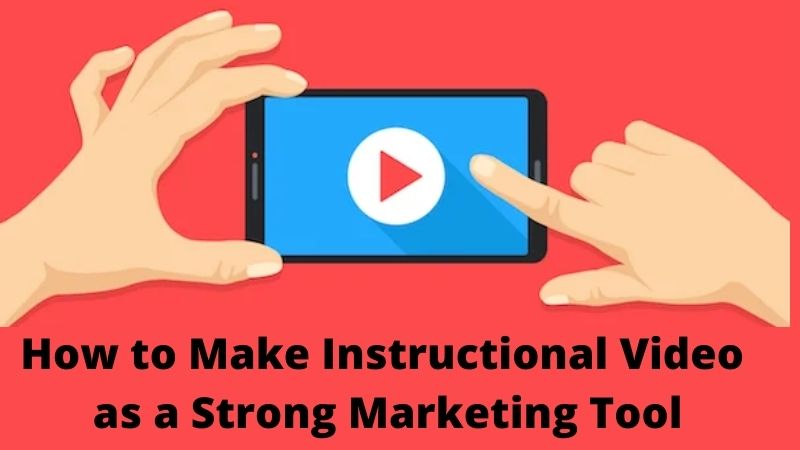Master the art of video content marketing with these tips, resources, and tools.
Video is a highly effective form of content, and its popularity is constantly growing. A 2019 report shows that 69% of people who want to learn about a product or service prefer to watch a short instructional video to guides (18%), infographics (4%), and ebooks (3%). In other words, it is definitely worth it to try making instructional video courses, especially when it’s possible to do without breaking the bank.
Keep reading to learn everything you need to know about making instructional videos, or use the links below to jump to a specific section.
The Power Of Training Videos In Marketing
Understanding the power of video marketing may help you to see how video marketing can be beneficial to your business and good use of your marketing dollars.
Below is a few reasons why every entrepreneur needs to incorporate instructional videos into their content strategy:
- They are highly engaging
Did you know that videos that teach how to do things are watched twice as much as pet videos?
Study videos are the perfect combination of entertainment and information for the kids. But not any kind of information – it’s the kind that your customers want to hear and that helps your potential buyers learn about your product.
- They increase brand awareness
Brand awareness is more about creating a feeling of trust and safety rather than mere recognition.
You can Make people aware of your brand with video and that will help to increase your conversions. With much regard, there’s no best way to grab people’s attention and to keep it as video content. Video marketers say that videos helped them increase brand awareness by 54%. It’s a big reason for you to jump on to the bandwagon.
- They help build and support customer loyalty
One of the greatest ways to show your target audience extra care and create a positive customer experience is to share videos that show them how to get the most out of your product or service.
Types of Instructional Videos
Now, we’ll walk through three of the most common instructional video types:
- Screencasts
This is a type of instructional video that typically uses screen recordings and audio narration to show individuals how to complete tasks using the software.
- Tutorial Video
Tutorials (also known as how-to videos) provide a step-by-step guide on how to do something. They can be used to teach your customers something new or create the foundational knowledge they’ll need to better understand your brand and your products.
- Training Video
Training videos are videos with the educational goals of teaching a skill or knowledge. A training video could be for employee onboarding, compliance training, software education, or many other uses.
- Explainer Video
This is a short-form video typically designed for marketing goals that highlight a company’s product, service, or business idea in an attractive and convenient way.
- Video Presentation
A video presentation has similar goals as an explainer video. It shows the benefits of a product with the help of interesting infographics, concise text, and appropriate narration.
‘Do I need fancy software or equipment to make a Youtube video?’ you may be wondering.
Fancy equipment is not necessary to create great instructional videos, although there are free or low-cost apps and programs for enhancing and improving videos to make them more engaging for learners. But if you intend to take more serious steps in your passion for videography, some equipment is essential. This tripod buying guide will help you choose a tripod that will be a perfect fit for your wants and needs.
How To Make Instructional Video Using Screen recording?
Before starting the process, you need to answer the following question:
What are your customers’ goals?
What challenges do they face?
What stands in the way of their goals?
With this brainstorming, you’ll be ready to make an instructional video that is both useful and interesting.
- Figure out who your end consumer is and build personas based on data
Your customers are not just portraits hanging on the wall. They are real people with stories and lives.
Generating customer-centric content begins with understanding who the customer is. This will help you create a detailed and more focused video.
- Write a script for your video
Whether it’s a promotional brand film, a corporate training video for internal use, or a video for social media or your website, a well-written script is essential. A script (even an easy one) will help you structure your thoughts, saving you all sorts of time and effort. You’re also far less likely to forget something.
- Record your webcam on the desktop
Once you’ve written a script, it’s time to capture your webcam and record screen and audio.
That’s where a free webcam recorder comes in. It allows you to capture video from your camera and save it as a video file. Of course, if you have a microphone, you can also record your voice or ambient sound.
You can create an instructional video in just 3 steps:
- First, you open your online recorder in the browser.
- Then, you adjust the recording settings and press the Start Recording button.
- Finally, you stop recording and download the file to your computer.
That’s it. Webcam software is absolutely free, and there are no video length limitations. Along with that, you can do cool things like:
- schedule recordings
- draw on videos
- show keystrokes and mouse clicks.
If you’re an Apple fan, you can try iMovie. iMovie is a free video editing software application designed by Apple. With iMovie, you can edit video color settings, crop and rotate video clips, stabilize shaky videos, add video transitions, and change the speed of clips. Moreover, iMovie can also improve a clip’s video and audio.
- Think about where you want to post your video
There is a range of social media platforms to promote the content. You can do it on Twitter, Instagram, LinkedIn, and Facebook, depending on which channels you regularly use to distribute your content and engage with potential customers.
What’s Next
Generating a successful educational video requires strategic thinking. You’re trying to inform and engage viewers at the same time, so you must be aware of several factors at once: your goals, technical constraints, distribution tactics, and more.
We hope our post will help you break into the world of video marketing. Above all else, we think this knowledge should help you make smarter decisions, not overwhelm you. We hope that the tools described above will save you time and increase brand awareness by effortlessly generating video content that simply makes sense.




